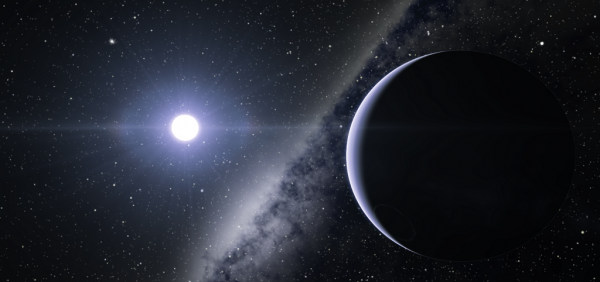BY LETTER
Jilunan (system)
Galactography > Sephirotic Empires > Solar Dominion
Galactography > Systems and Worlds > Systems & Worlds I - J
Galactography > Systems and Worlds > Systems & Worlds I - J
 Image from Steve Bowers | |
| Before terraforming, Jalore was a cloudy lifeless gaian world. | |
Jilunan is a Dominion outpost system in Sagittarius, known for the famous Fubas Clone Goo Disaster. This system has become a tourist attraction because of its large population of clones, known as the Fubasii, all derived from a single individual,
Primary: Jilunan Prime, originally an F4-type star (with the catalog number YTS 2145-098-3). Later reduced to F8 by sun mining for wormhole construction and exotic matter production
Planets: Originally ten main planets.
Rilia (hot superterrestrial) 4.5 x Earth mass, extensively mined and converted into orbiting megastructures)
Ocannerth (hot selenian) 0.3 x Earth mass (converted to shell world)
Briminie (euvenusian) 0.9 x Earth mass (now terraformed)
Jalore (lifeless gaian) 1.4 x Earth mass (now terraformed)
Rarrisoe (arean) 0.5 x Earth Mass (now completely dismantled for construction material)
Tiovis (eujovian) 52 x Earth mass (rings and many moons dismantled to build habitats and other megastructures, others paraterraformed)
Sonsuter eujovian 39 x Earth mass (rings and many moons dismantled to build habitats and other megastructures)
Dalmoni eujovian 31 x Earth mass (many moons dismantled to build habitats and other megastructures)
Chabos Ice/rock world, mostly dismantled
Keiruta Ice/rock world, partly dismantled
Affiliation: Dominion (Surya-Ramydos Prefecture)
Region: Outer Volumes (Sagittarius sector)
Colonised: 8925 AT
Population: 2613 billion Fubasii (augmented nearbaseline humans) Also 4 billion modosophonts from other clades, and a similar number of tourists (numbers vary)
Wormholes: 3
Beamrider Stations: none
Industries: tourism, narcissism, alife collections, hedonics, fine wine, sculpture, architectural templates, live performance, pop music industry, concrete and speculative philosophy, Fubas personoid virtuals, amat production
Related Articles
- Ayansowi
- Fubas Clone Goo Event
- Jilunan - Text by M. Alan Kazlev
(b. 6912 S1 7542 S2 7964 Transcended 8956) Nanocyborged Posthuman Dominion Administrator, Encyclopaedist, Perfect Artist, Statesbeing, Mystic, and transapient culture hero.
Appears in Topics
Development Notes
Text by M. Alan Kazlev
Additional material by Steve Bowers
Initially published on 25 November 2001.
Additional material by Steve Bowers
Initially published on 25 November 2001.






